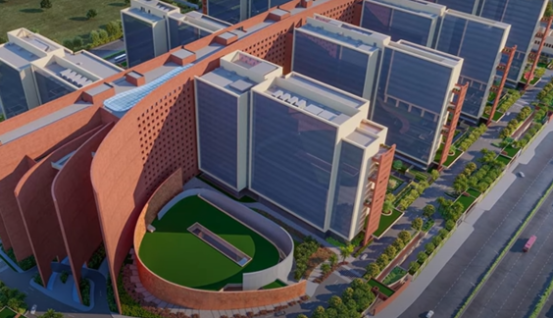What is the latest with the Surat Diamond Bourse? Rapaport Senior Analyst Joshua Freedman assesses the ongoing precarious situation at the brand-new bourse. Intended to eventually compete with the Mumbai Bourse, its Surat counterpart is struggling for both economic and structural reasons.
India now has two diamond bourses, Mumbai and Surat. Established in 2010, the BDB (Bharat Diamond Bourse) in Mumbai remains a heavyweight. With 4,000 members, it is in a different league to its little sister, the SDB (Surat Diamond Bourse), founded in 2023 and located 270 km north of Mumbai.
Yet while Mumbai is still a key location for traders worldwide, Surat is where it all happens. Known as the world’s cutting center, Surat accounts for 90% of India’s diamond business. And it has thought big. The new bourse is gigantic, occupying several towers over 660,000 m2 (compared with the BDB’s 186,000 m2) and ready to accommodate 65,000 people. Its end goal is to take the top spot from Bharat.
However, despite its impressive size and all-new premises, Surat is struggling to get off the ground, and is having a particularly hard time attracting the sector’s large and smaller players, the latter for whom its services are unsuitable. In terms of logistics, Surat remains less accessible than Mumbai, and its infrastructure is less developed. The main problem lies elsewhere though. The SDB has opened its doors at the worst possible time, when the global diamond business is stagnating. Added to this is the uncertainty surrounding the sanctions against Russian diamonds, which could severely penalize its business. Barely inaugurated, it has already seen its chairman resign.
Meanwhile, the Mumbai Bourse is thinking of expanding and has already obtained government approval to acquire new land.

